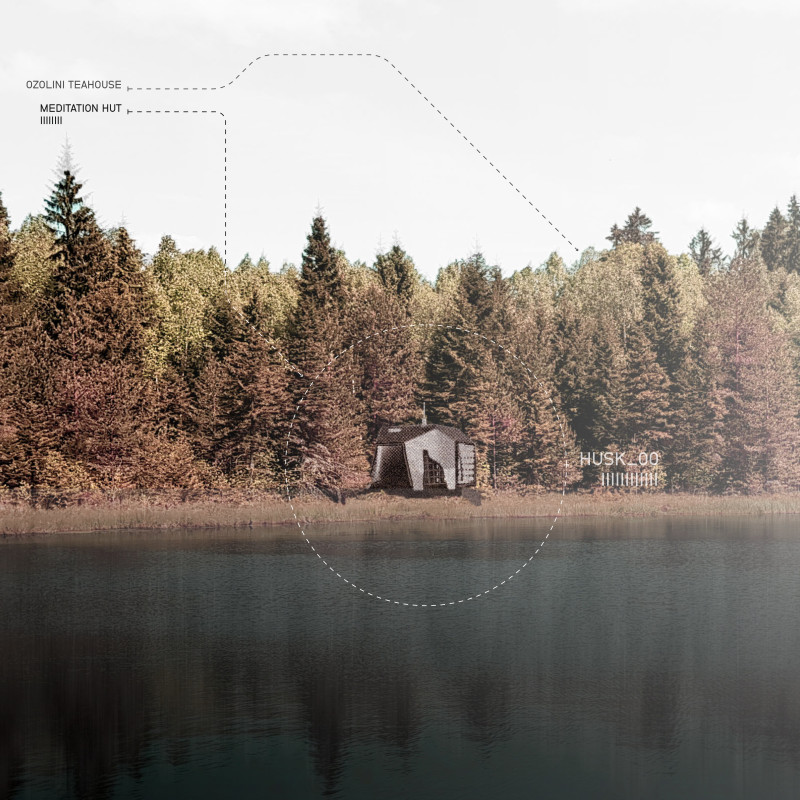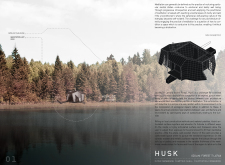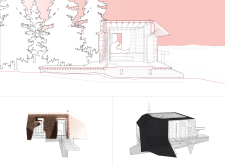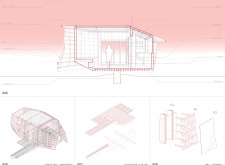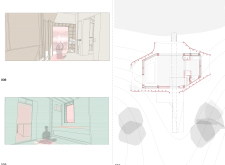5 key facts about this project
The Ozolini Teahouse Meditation Hut is located in the tranquil Ozolini Forest of Latvia. It serves as a space for meditation, designed to integrate with the surrounding natural landscape. The main goal is to create an environment that fosters mental clarity and calmness, enabling users to engage in a meditative practice known as "the unconditioned." The structure aims to minimize distractions and enhance introspection by thoughtfully shaping its interior and exterior.
Design Concept
The design focuses on a minimal dwelling characterized by an emptied, porous membrane. This innovative approach rethinks how users interact with their environment. Rather than merely considering ecological impacts, it creates opportunities for users to form new relationships with nature. The design is not only about shelter but also about generating a deeper connection to the natural world.
Interior Configuration
Inside the hut, the layout features highly articulated surfaces and flexible frameworks. Users can adjust their experiences based on their meditative needs. This adaptability allows individuals to control their exposure to outside elements, aligning the space with their personal practices. The interior promotes comfort and peace, creating an inviting atmosphere for reflection and self-discovery.
Exterior Relationships
The exterior combines wooden and metallic surfaces that respond to the local environment. These materials develop a natural patina over time, reflecting their relationship with nature. Additionally, the membrane's design includes recesses of varying thickness, creating niches that support local flora and fauna. This interaction enhances biodiversity and emphasizes the ecological aspects of the project.
Light enters the space through the porous membrane, creating patterns that shift throughout the day. This interplay between light and structure highlights the connection between the interior and the surrounding landscape, reinforcing the hut's role as a space for contemplation amid nature.


